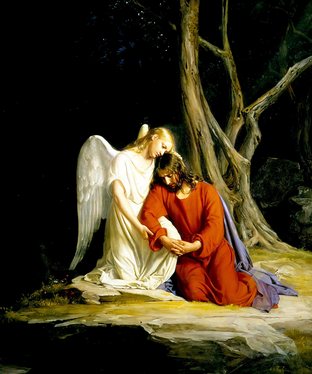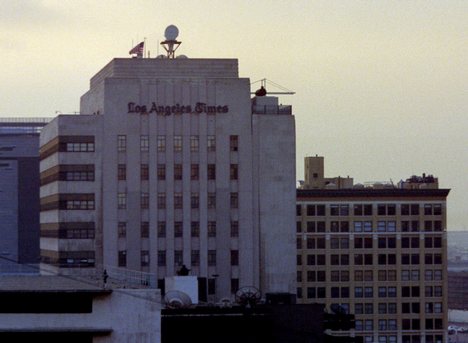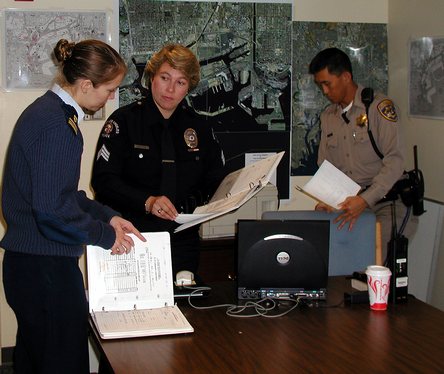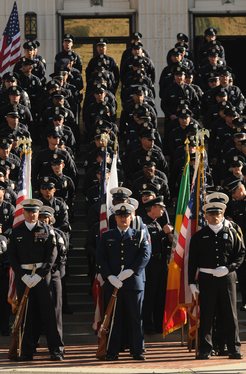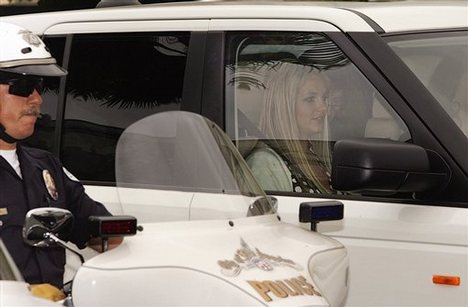
- Order:
- Duration: 5:45
- Published: 2006-07-28
- Uploaded: 2011-01-09
- Author: linhvu3010
these configurations will be saved for each time you visit this page using this browser
, 1825–1905.]] Angels are messengers of God in the Hebrew Bible, (translating ), the New Testament and the Quran. The term "angel" has also been expanded to various notions of spiritual beings found in many other religious traditions. Other roles of angels include protecting and guiding human beings, and carrying out God's tasks.
The theological study of angels is known as angelology. In art, angels are often depicted with wings, ultimately reflecting the descriptions in the Hebrew Bible, such as the chayot in Ezekiel's Merkabah vision or the Seraphim of Isaiah.
Medieval Jewish philosopher Maimonides explained his view of angels in his Guide for the Perplexed II:4 and II:6:
According to Kabalah, there are four worlds and our world is the last world: the world of action (Assiyah). Angels exist in the worlds above as a 'task' of God. They are an extension of God to produce effects in this world. After an angel has completed its task, it ceases to exist. The angel is in effect the task. This is derived from the book of Genesis when Abraham meets with three angels and Lot meets with two. The task of one of the angels was to inform Abraham of his coming child. The other two were to save Lot and to destroy Sodom and Gomorrah.
Famous angels and their tasks:
* Malachim (translation: messengers), general word for angel
By the late fourth century, the Church Fathers agreed that there were different categories of angels, with appropriate missions and activities assigned to them. Some theologians had proposed that Jesus was not divine but on the level of immaterial beings subordinate to the Trinity. The resolution of this Trinitarian dispute included the development of doctrine about angels.
The angels are represented throughout the Christian Bible as a body of spiritual beings intermediate between God and men: "You have made him (man) a little less than the angels..." (). Some Christians believe that angels are created beings, and use the following passage as evidence: "praise ye Him, all His angels: praise ye Him, all His hosts... for He spoke and they were made. He commanded and they were created..." (; ). The Fourth Lateran Council (1215) declared that the angels were created beings. The Council's decree Firmiter credimus (issued against the Albigenses) declared both that angels were created and that men were created after them. The First Vatican Council (1869) repeated this declaration in Dei Filius, the "Dogmatic constitution on the Catholic faith". Of note is that the bible describes the function of angels as "messengers" and does not indicate when the creation of angels occurred.
Many Christians regard angels as asexual and not belonging to either gender as they interpret Matthew 22:30 in this way. Angels are on the other hand usually described as looking like male human beings. Their names are also masculine. And although angels have greater knowledge than men, they are not omniscient, as Matthew 24:36 points out. Another view is that angels are sent into this world for testing, in the form of humans.
Since the completion of the New Testament, the Christian tradition has continued to include a number of reported interactions with angels. For instance, in 1851 Pope Pius IX approved the Chaplet of Saint Michael based on the 1751 private revelation from archangel Michael to the Carmelite nun Antonia d'Astonac. And Pope John Paul II emphasized the role of angels in Catholic teachings in his 1986 address titled "Angels Participate In History Of Salvation", in which he suggested that modern mentality should come to see the importance of angels.
As recently as the 20th century, visionaries and mystics have reported interactions with, and indeed dictations from, angels. For instance, the bed-ridden Italian writer and mystic Maria Valtorta wrote The Book of Azariah based on "dictations" that she directly attributed to her guardian angel Azariah, discussing the Roman Missal used for Sunday Mass in 1946 and 1947. 21st century mystic and medium Danielle Egnew is referenced in Steve Barney’s book The Sacred and the Profane as a prominent example of modern day communication with angels, during which Egnew reports channeled angelic messages of individual assistance as well as future world events such as 2012.
The earliest known representation of angels with wings is on what is called the Prince's Sarcophagus, discovered at Sarigüzel, near Istanbul, in the 1930s, and attributed to the time of Theodosius I (379-395).
Saint John Chrysostom explained the significance of angels' wings: "They manifest a nature's sublimity. That is why Gabriel is represented with wings. Not that angels have wings, but that you may know that they leave the heights and the most elevated dwelling to approach human nature. Accordingly, the wings attributed to these powers have no other meaning than to indicate the sublimity of their nature."
's famous angels from the Basilica dei Santi Apostoli, now in the sacristy of St. Peter's.]]
From then on, though of course with some exceptions, Christian art represented angels with wings, as in the cycle of mosaics in the Basilica of Saint Mary Major (432–440). Four- and six-winged angels, often with only their face and wings showing, drawn from the higher grades of angels, especially cherubim and seraphim, are derived from Persian art, and are usually shown only in heavenly contexts, as opposed to performing tasks on earth. They often appear in the pendentives of domes or semi-domes of churches.
Angels, especially the Archangel Michael, were depicted as military-style agents of God came to shown wearing Late Antique military uniform. This could be either the normal military dress, with a tunic to about the knees, armour breastplate and pteruges, but also often the specific dress of the bodyguard of the Byzantine Emperor, with a long tunic and the loros, a long gold and jewelled pallium restricted to the Imperial family and their closest guards. The basic military dress is still worn in pictures into the Baroque period and beyond in the West (see Reni picture above), and up to the present day in Eastern Orthodox icons. Other angels came to be conventionally depicted in long robes, and in the later Middle Ages they often wear the vestments of a deacon, a cope over a dalmatic, especially Gabriel in Annunciation scenes—for example the Annunciation in Washington by Jan van Eyck.
Latter Day Saints believe that angels are former humans or the spirits of humans yet to be born, and accordingly Joseph Smith taught that "there are no angels who minister to this earth but those that do belong or have belonged to it." As such, Latter Day Saints also believe that Adam (the first man) is now the archangel Michael, and that Gabriel lived on the earth as Noah.
Most angelic visitations in the early Latter Day Saint movement were witnessed by Joseph Smith and Oliver Cowdery, who both claimed (prior to the establishment of the Church in 1830) to have been visited by the prophet Moroni, John the Baptist, and the Apostles Peter, James, and John. Later, at the dedication of the Kirtland Temple, Smith and Sidney Rigdon claimed to have been visited by Jesus, and subsequently by Moses, Elias, and Elijah.
People who claimed to have received a visit by an angel include the other two of the three witnesses: David Whitmer and Martin Harris. Many other Latter Day Saints, both in the early and modern church, have claimed to have seen angels, though Smith posited that, except in extenuating circumstances such as the restoration, mortals teach mortals, spirits teach spirits and resurrected beings teach other resurrected beings.
Angels can take on different forms. The Islamic prophet Muhammad, speaking of the magnitude of the angel Gabriel, has said that his wings spanned from the Eastern to the Western horizon. Also, in Islamic tradition, angels used to take on human form.
The following is a Quranic verse that mentions the meeting of an angel with Mary, mother of Jesus: Surah Aal ‘Imran Chapter 3 verse 45
`Abdu'l-Bahá, Bahá'u'lláh's son, defined angels as "those holy souls who have severed attachment to the earthly world, who are free from the fetters of self and passion and who have attached their hearts to the divine realm and the merciful kingdom".
Furthermore, he said that people can be angels in this world:
"Ye are the angels, if your feet be firm, your spirits rejoiced, your secret thoughts pure, your eyes consoled, your ears opened, your breasts dilated with joy, and your souls gladdened, and if you arise to assist the Covenant, to resist dissension and to be attracted to the Effulgence!"
Azrael (as Azraa-eel) is named as the angel of death in the Guru Granth Sahib, the holy scripture and the final Guru of the Sikhs.
In So Dar and Raag Asa Sat Guru Nanak mentions clearly two beings Chitar and Gupat who record the deeds of men. These beings are Angels assigned with this Divine task by the Creator. Chitar records the deeds that are visible to all and Gupat records that which is hidden in thought or secret action. Their names themselves allude to the tasks which the All Mighty has bestowed upon them. The celestial beings are often seen at the gates of heaven, dressed in the most adorned and decorated gowns, holding the records on the actions and feelings of the soul in the line for judgement.
It is believed by Theosophists that nature spirits, elementals (gnomes, undines, sylphs, and salamanders), and fairies can be also be observed when the third eye is activated. It is maintained by Theosophists that these less evolutionarily developed beings have never been previously incarnated as humans; they are regarded as being on a separate line of spiritual evolution called the “deva evolution”; eventually, as their souls advance as they reincarnate, it is believed they will incarnate as devas.
It is asserted by Theosophists that all of the above mentioned beings possess etheric bodies that are composed of etheric matter, a type of matter finer and more pure that is composed of smaller particles than ordinary physical plane matter.
In the US, a 2008 survey by Baylor University's Institute for Studies of Religion, published by TIME Magazine, which polled 1,700 respondents, found that 55 percent of Americans, including one in five of those who say they are not religious, believe that they have been protected by a guardian angel during their life. An August 2007 Pew poll found that 68 percent of Americans believe that "angels and demons are active in the world", and according to four different polls conducted in 2009, a greater percentage of Americans believe in angels (55%) than those who believe in global warming (36%).
According to the Gallup Youth Survey, in a Teen Belief in the Supernatural poll in 1994, 76% of 508 teenagers (aged 13–17) believe in angels, a greater percentage than those whom believed in astrology, ESP, ghosts, witchcraft, clairvoyance, Bigfoot, and vampires. In 1978, 64% of American young people believed in angels; in 1984, 69% of teenagers believed in angels; and by 1994, that number grew to 76%, while belief in other supernatural concepts, such as the Loch Ness monster and ESP, have declined. In 1992, 80% of 502 surveyed teenage girls believe in angels, and 81% of Catholic teens and 82% of regular church attendees harbored beliefs in angels. According to another set of Gallup polls, designated towards all Americans, in 1994, 72% of Americans said they believed in angels, while in 2004, 78% of the surveyed Americans indicated belief in angels, with the percentage of Americans that did not believe in angels dropping from 15% to 10%, and the percentage of Americans that were "not sure" dropping from 13% to 11%.
In Canada, a 2008 survey of over 1000 Canadians found 67 percent believe in angels.
Category:Deities, spirits, and mythic beings Category:Greek loanwords Category:Christian terms
This text is licensed under the Creative Commons CC-BY-SA License. This text was originally published on Wikipedia and was developed by the Wikipedia community.



![Sarah McLachlan - Angel [Official Music Video] Sarah McLachlan - Angel [Official Music Video]](http://web.archive.org./web/20110131125958im_/http://i.ytimg.com/vi/i1GmxMTwUgs/2.jpg)




















